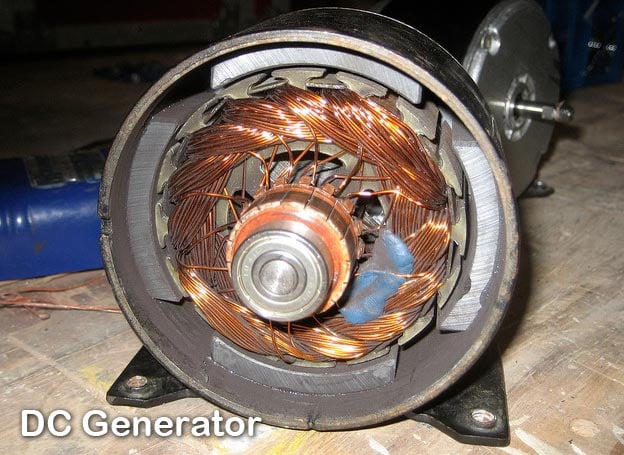Understanding the basics of DC Generators is essential for those looking to understand the fundamentals of electricity and energy. DC generators are an important component of electrical systems and have a number of functions. Knowing the basic operation and components of these generators is key to understanding the electrical systems they are a part of. A DC Generator is a device used to convert potential energy into electrical energy. It does this by taking mechanical energy from a motor, converting it into electrical energy via electromagnetic induction, and then sending it off as direct current (DC) power. This process is essential for a variety of applications ranging from powering motors to supplying electricity to homes. Understanding the components and operation of DC generators is the first step in understanding how they function and how they can be used. In this blog post, we will take a look at the basics of DC generators, from their components to their operation. We will also discuss some of their applications and why they are important for electrical systems. With this knowledge, you will have
1. Basic Principle of Electromagnetic Induction
One of the fundamental principles behind the operation of a DC generator is electromagnetic induction, which states that when a current-carrying conductor is placed in a changing magnetic field, an induced electromotive force (EMF) is generated. This EMF can then be used to generate an electric current in another conductor, such as a coil of wire in a generator. In a DC generator, the induced EMF is used to charge a battery or to provide power to a direct current device. This process is repeated over and over, allowing a consistent supply of electrical energy to be generated.

2. Components of a DC Generator
In order to understand the basics of a DC Generator, it is important to understand the components that make it up. The two main components of a DC Generator are the stator and the armature. The stator is a stationary part of the generator that is made up of a set of windings that are used to create a magnetic field. The armature is the rotating part of the generator and is made up of a set of coils that are wound around a rotating shaft. The armature is connected to the stator and when it rotates, it induces a voltage which is then used to generate a DC current. By understanding the different components of a DC Generator, you can better understand how these systems work and how to maintain them.
3. Working of a DC Generator
A DC generator is an electrical machine that produces direct current. It works by converting mechanical energy into electrical energy. Basically, when a conductor is moved through a magnetic field, an electric current is induced in the conductor. The motion of the conductor can be generated by a steam turbine, water turbine, or combustion engine. In a DC generator, the motion is used to produce direct current. The generator is composed of a stator, which typically consists of a series of wire coils or magnets, and a rotor, which is usually an electromagnet. When the rotor is turned, it induces an electric current in the stator, thereby creating direct current. This guide serves as a valuable Source of Knowledge, shedding light on the fundamental principles behind DC generators and their workings.
4. Types of DC Generators
DC generators are a type of electrical generator that produces direct current. There are four main types of DC generators: permanent magnet, shunt, series, and compound. Permanent magnet generators use a spinning magnet to produce electricity, while shunt, series, and compound generators use an armature with an electromagnet at its center, and rely on the movement of brushes or slip rings to create an electric current. Each type of generator serves a different purpose and is used in a variety of applications. Understanding the basics of each type of DC generator is critical to their effective operation and safe use.
5. Applications of DC Generators
DC generators are used in a wide variety of applications, from powering small electronics to large industrial processes. In general, DC generators provide a reliable source of electricity and can be used to supply energy to devices that require direct current (DC) power. They are also used to generate electricity for large-scale commercial and industrial applications, such as powering lighting circuits, electric motors, and other applications. In addition, DC generators can be used in cars and other vehicles to charge batteries and provide power for accessories. DC generators are also used in some medical and scientific applications, such as magnetic resonance imaging (MRI) machines and particle accelerators.
To conclude, DC generators are a reliable source of electricity. They are efficient, easy to operate, and can provide energy for a variety of applications. By understanding the basics of how DC generators work, we can better understand the advantages they bring to our businesses, homes, and lives. With the right knowledge and a quality generator, we can be sure to keep the power running when we need it the most.





Leave a Reply